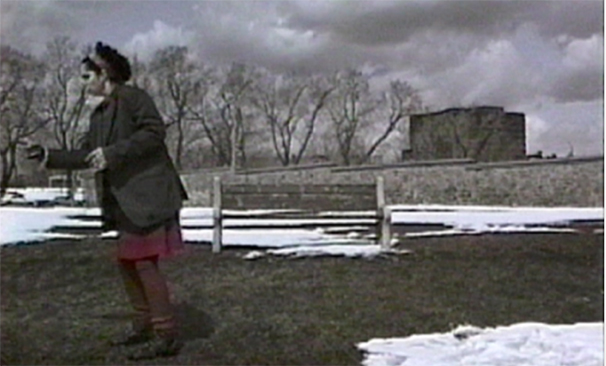By Celia Vara
How might feminist political action be when it is not overtly revolutionary? Not even public? How is the body valued in this kind of political action, particularly as a site for learning? And how does the environment (in its material and symbolic dimensions) provide a source for embodied practice and for diverse forms of personal and social engagement?
Celia Vara has curated this programme from research-creation with an embodied methodology, closely linked to the notion of kinaesthetic empathy, to show that our sense of bodily position and movement relates to our awareness of the space we occupy.
Kinaesthetic empathy allows us to relate to another person’s movement or sensory experience of movement (Sklar, Reynolds and Reason, Foster). This allows for the experimentation and creation of new bodily routines and thus a form of agency that allows for subtle somatic resistance under varying conditions of bodily repression. The forms of feminist liberation that we can observe in the works selected in this programme emphasise the body in the intimate and public environment as a central aspect of agency (McNay, Meynell, Coole, Sheets-Johnstone). In their work, it is precisely through movement (and thus kinaesthesia) that the body engages with its environment to gather knowledge about itself and the world as well as to intervene in it. These artists engage in perceptual practices that offer explorations of space and how the body occupies it. This allows for a subtle observation of the somatic emphasising different ways of liberating and situating the body. These forms of feminist liberation emphasise the body as the central aspect of agency. They are sensory instructions for feminist political statements.
Program Dar Cuerpo al Cuerpo II: Quebec
A selection of videos (1977-1998) by Quebec artists showing, on the one hand, a clear activist purpose against abuses of power that deconstructs the role of women in Quebec society through 2000 Bonnes Raisons de Marcher (1998) (Petunia Alves) where the focus is on women’s bodies occupying public space. On the other hand, this programme has a more intimate and introspective somatic approach that explores bodily agency through movement and kinaesthesia in different spaces. The 1990s are interesting in Quebec in terms of a form of reaction against the centrality in explicitly revolutionary and activist forms of feminist demands in the 1970s.
The selected works are: 2000 Bonnes Raisons de Marcher (1998) by Petunia Alves, Ruelle en perspective (1977) and Janet see herself (1977) by Marshalore; and “Vice, vertu et viceversa (1993), Oublier (1994) and Parc d’amussement (1992) by Manon Labrecque.







